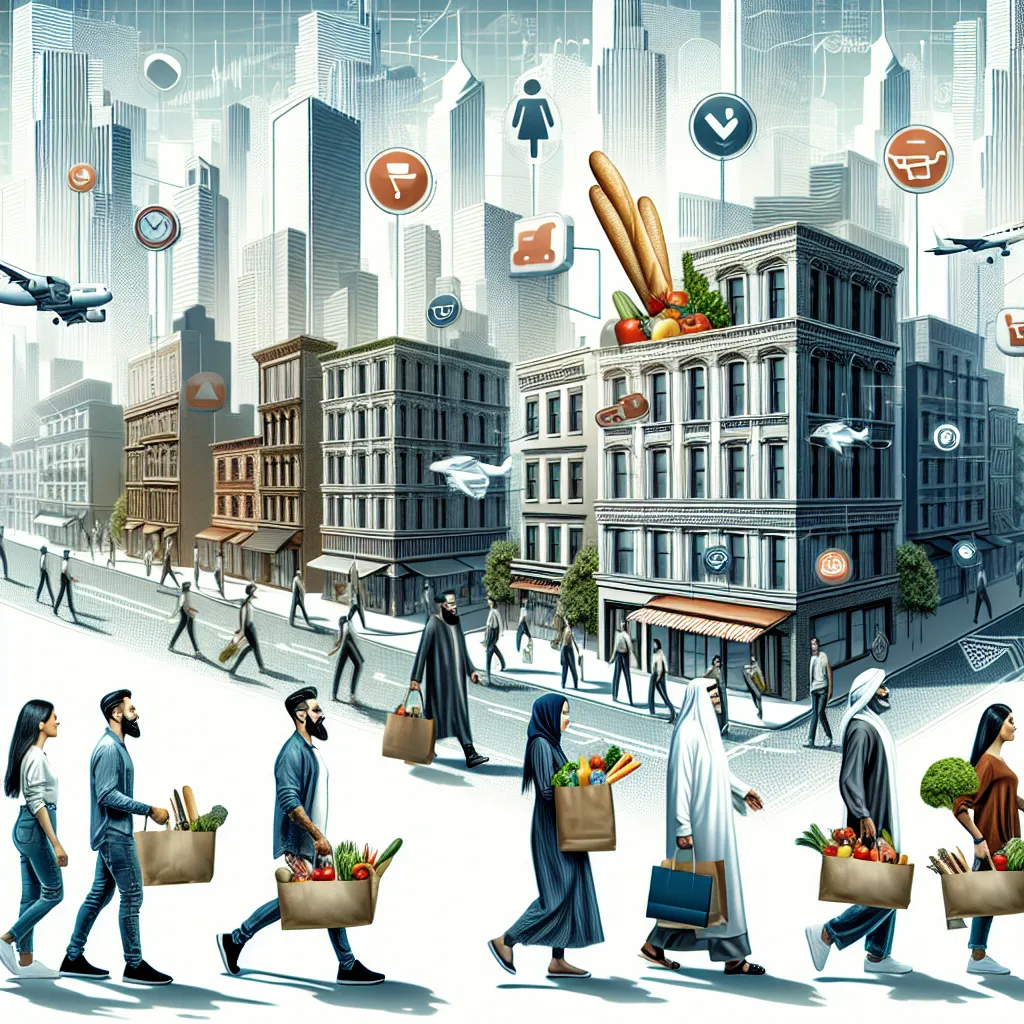The Growing Influence of E-commerce on Grocery Shopping
The growing influence of e-commerce on grocery shopping has significantly changed the way people purchase their daily food and household items. With the rise of online grocery shopping, consumers now have the convenience of browsing and selecting products from the comfort of their homes, saving time and avoiding the hassle of physical store visits. This trend has been further accelerated by the COVID-19 pandemic, as more people opt for contactless shopping experiences.
Online grocery shopping offers a wide variety of products and brands, allowing consumers to compare prices and find the best deals without leaving their homes. Additionally, the integration of technology, such as personalized recommendations and targeted promotions, enhances the overall shopping experience and provides added convenience.
E-commerce has also enabled grocery retailers to reach a broader audience beyond their physical store locations, opening up new opportunities for growth and expansion. Furthermore, the availability of delivery services and flexible pickup options has made online grocery shopping even more appealing to consumers with busy lifestyles.
As e-commerce continues to reshape the grocery shopping landscape, it is essential for retailers to adapt to these changes and invest in robust online platforms to meet the evolving demands of consumers. Embracing technology, optimizing logistics, and ensuring product quality will be crucial for staying competitive in this rapidly growing market.
Consumer Behavior Shifts: From Brick-and-Mortar to Digital
The rise of online grocery shopping has brought about significant shifts in consumer behavior, transitioning from traditional brick-and-mortar stores to digital platforms. This change has been driven by a variety of factors, including convenience, time-saving, and the increasing availability of online delivery options. With the proliferation of mobile devices and improved internet access, consumers are now more inclined to browse and purchase groceries online, contributing to the growing trend of e-commerce in the food retail sector.
Moreover, the ongoing global pandemic has accelerated the adoption of online grocery shopping as consumers seek safer and more convenient ways to purchase essential items. The ability to shop from the comfort of one’s home and have groceries delivered directly to their doorstep has become increasingly appealing, shaping the way consumers approach food shopping.
Additionally, the shift towards digital grocery shopping has prompted retailers to enhance their online platforms, offering user-friendly interfaces, personalized recommendations, and seamless payment options to cater to evolving consumer preferences. As a result, traditional grocery stores are now integrating digital strategies to align with changing consumer behavior, emphasizing the need to provide both in-store and online shopping experiences.
In conclusion, the transition from brick-and-mortar to digital grocery shopping signifies a fundamental shift in consumer behavior, driven by convenience, safety concerns, and advancements in online retail technology. As this trend continues to unfold, understanding and adapting to these changes will be crucial for both retailers and consumers in the evolving landscape of grocery shopping.
The Role of Technology in Revolutionizing Grocery Retail
The role of technology in revolutionizing grocery retail has been pivotal in the rise of online grocery shopping. With the advancement of e-commerce platforms, mobile apps, and smart devices, grocery retailers have been able to offer convenient and seamless shopping experiences to their customers. One of the key technological trends driving this revolution is the use of data analytics and artificial intelligence to personalize the shopping experience. By analyzing customer data, retailers can offer personalized recommendations and promotions, enhancing customer satisfaction and loyalty.
Furthermore, the integration of Internet of Things (IoT) devices in the retail environment has enabled the concept of smart grocery stores. These stores are equipped with sensors and connected devices that monitor inventory levels, track expiration dates, and even automate the ordering process. This not only improves operational efficiency for retailers but also ensures that customers have access to fresh products and accurate inventory information.
In addition, the widespread adoption of mobile payment solutions and contactless payments has facilitated smoother and more secure transactions, further enhancing the overall shopping experience. The convenience of being able to shop for groceries anytime, anywhere, and complete the purchase with just a few taps on a smartphone has significantly contributed to the popularity of online grocery shopping.
Overall, technology has played a crucial role in reshaping the grocery retail landscape, making online grocery shopping a mainstream choice for consumers. As technology continues to advance, we can expect further innovations that will continue to transform the way we purchase groceries.
Challenges and Opportunities in the Online Grocery Market
As the online grocery shopping market continues to expand, it presents both challenges and opportunities for retailers and consumers alike. One of the major challenges in the online grocery market is ensuring the freshness and quality of the products during delivery. Consumers have traditionally preferred to personally inspect fruits, vegetables, and other perishable items before making a purchase. Additionally, some consumers have reservations about the environmental impact of packaging and delivery in the online grocery sector. However, these challenges also open up opportunities for innovative solutions, such as the use of advanced packaging materials and technologies to maintain the freshness of products during transportation, or implementing sustainable delivery practices to reduce the environmental footprint of online grocery shopping.
Another significant challenge in the online grocery market is building and maintaining customer trust. With sensitive personal and financial information being shared online, consumers need to feel confident in the security of their transactions. Retailers must invest in robust cybersecurity measures and transparent communication to address these concerns. On the flip side, the online grocery market offers opportunities for retailers to leverage data analytics to personalize the shopping experience, anticipate consumer needs, and offer tailored promotions and discounts. By harnessing the power of data, retailers can build stronger relationships with their customers and enhance brand loyalty.
Furthermore, logistical challenges, such as managing inventory and efficiently fulfilling orders, are inherent in the online grocery sector. However, technological advancements in automation and artificial intelligence provide opportunities to streamline operations and improve the overall efficiency of the supply chain. Implementing optimized inventory management systems and leveraging automation can help retailers reduce costs and minimize errors in order fulfillment.
In conclusion, while the online grocery market presents various challenges, it also offers abundant opportunities for retailers to innovate and improve the shopping experience. By addressing the concerns related to product quality, security, and logistical efficiency, retailers can establish a strong foothold in this rapidly growing market and meet the evolving demands of consumers.

